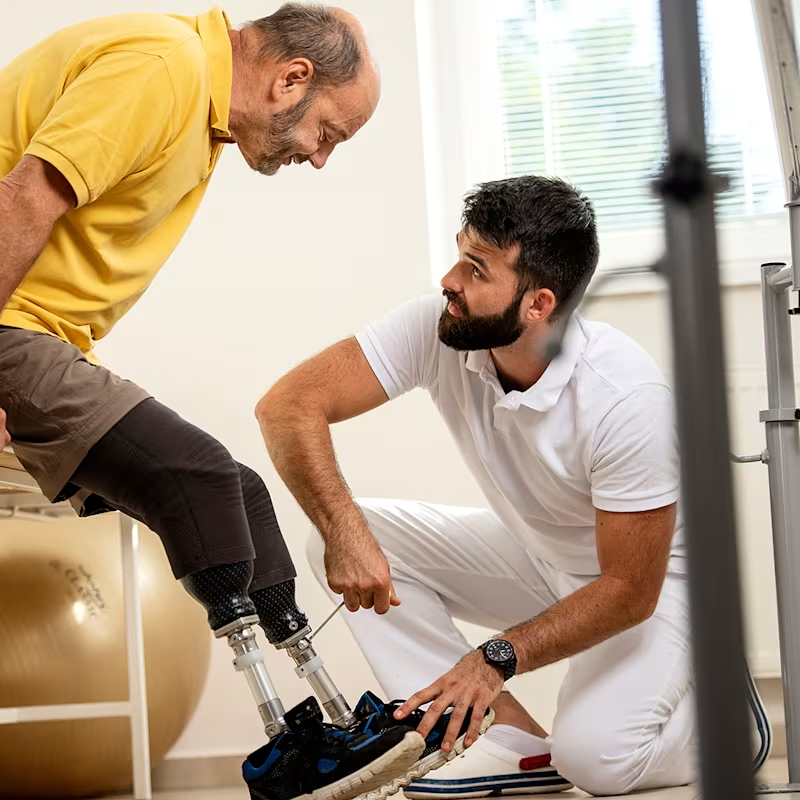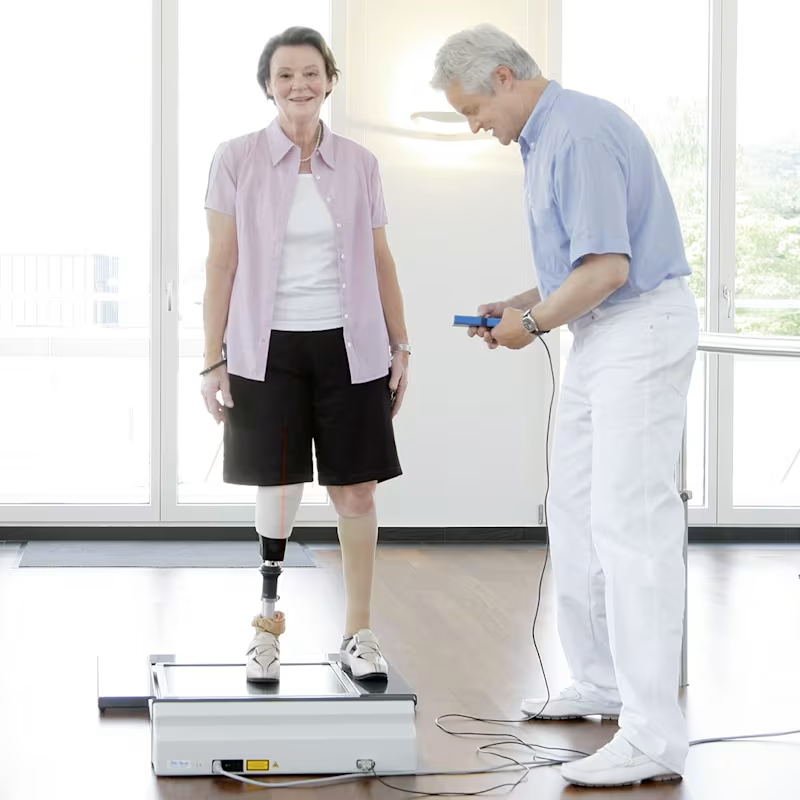


Getting the most out of your prosthesis
How well a prosthesis works is a combination of many things. For most people, the top three are:
Socket fit
Alignment
Your physical and mental abilities along with access to therapy or training.
As you work with a Prosthetist, they will guide you through decisions about product and fit. Knowing more about how a prosthesis works will help ensure you get the best fit for you.
There are many resources to learn more about prostheses. For broader information on living with an amputation, visit the Info for new amputees page. Since Ottobock has designed and manufactured prosthetic components for nearly a century, we have a unique perspective that complements the information you get from other sources.
Socket Fit
Your Prosthetist will work with you to custom make a socket to fit your limb shape. Socket fit is important because it connects your body and the prosthetic limb. As you move, the impact centers on the socket, and a good, close fit helps distribute and minimize that impact.
There are many choices of materials and shape that your Prosthetist can make based on how you live your life and your physical situation. Today, the most common materials are plastic and carbon graphite / carbon fibre he shape varies widely, too.
The benefits of good socket fit include:
Limited movement of your limb inside the socket, which can reduce friction and improve skin health and comfort
Good control of the function of your prosthesis.
Keep in mind that the volume of your residual limb changes throughout the day, and will affect your socket fit. Talk to your Prosthetist about socks, your suspension options and other ways to manage these changes.

Alignment
Alignment in a prosthesis refers to how the parts fit together in relation to each other. It is not a simple vertical line. Alignment of the prosthesis has subtle variations based on things like:
Type and way the components work
Length of residual limb and level of amputation
Posture and body size
Ability to control the prosthesis.
Your Prosthetist bases alignment on your feedback and his or her clinical expertise. The benefits of good alignment include better control, more stability, superior comfort and improved function.

Physical and Mental Health
To make sure you get the prosthesis that works best for you, your Prosthetist asks about your life. What types of activities do you enjoy? Are you working, or do you plan to return to work? What physical challenges are there in your home, neighborhood and workplace? They also assess your physical well being, including things like muscle strength, stamina and balance. It is important to think about potential – about what is possible – as well as your current state.
Finally, once you have your new limb, therapy or rehabilitation helps ensure that you know all the details about using your prosthesis. Even if this isn’t your first prosthesis, your skills may have changed, and technology may be different. Check with your Prosthetist about caring for your prosthesis. And take the time to make sure that you know how to move in your prosthesis and how it can help you be more independent and active.
